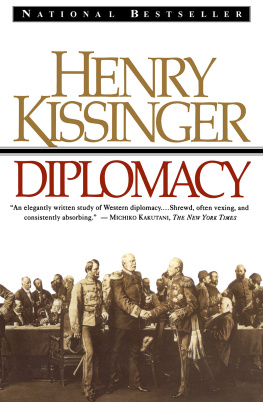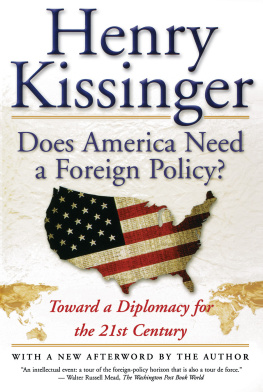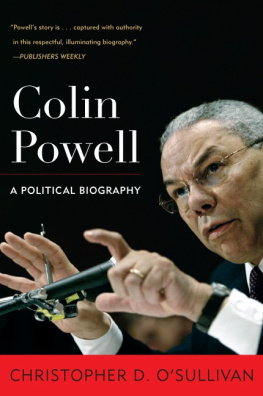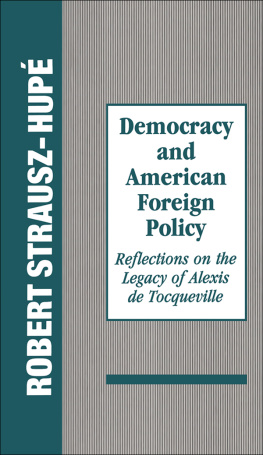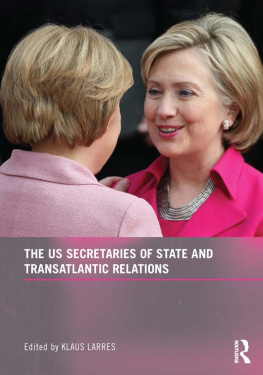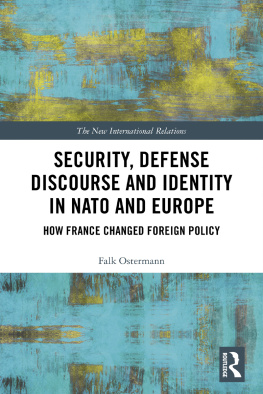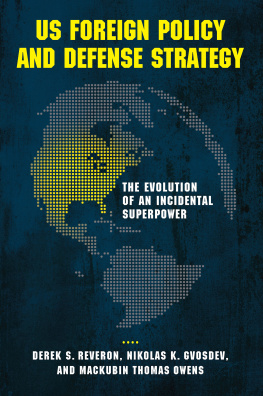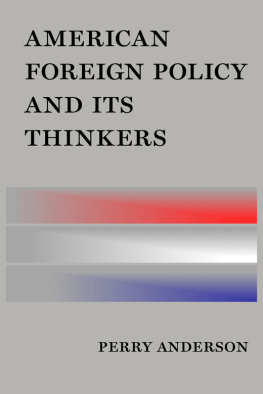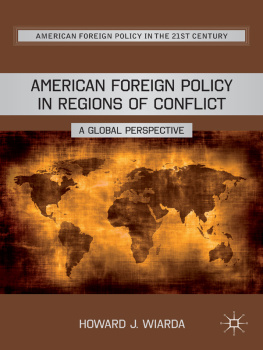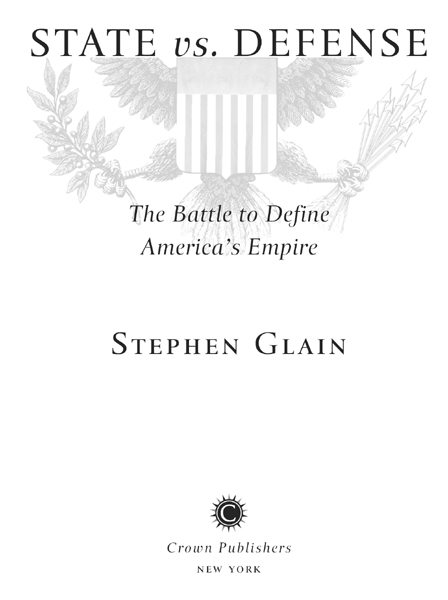A LSO BY S TEPHEN G LAIN
Mullahs, Merchants, and Militants:
The Economic Collapse of the Arab World
Copyright 2011 by Stephen Glain
All rights reserved.
Published in the United States by Crown Publishers, an imprint of the Crown Publishing Group, a division of Random House, Inc., New York. www.crownpublishing.com
CROWN and the Crown colophon are registered trademarks of Random House, Inc.
Library of Congress Cataloging-in-Publication Data
Glain, Stephen.
State vs. Defense: the battle to define Americas empire / Stephen Glain.1st ed.
p. cm.
1. United StatesMilitary policy20th century. 2. United StatesMilitary
policy21st century. 3. United StatesForeign relations1945 4. Cold
War. 5. RadicalismReligious aspectsIslam. 6. United StatesEconomic
conditions21st century. I. Title.
UA23.G634 2011
355.033573dc22 2010053206
eISBN: 978-0-307-88898-3
Jacket design by Pete Garceau
Jacket and title page illustration: Granger Collection
v3.1
For Atticus and his extraordinary mother
C ONTENTS
P REFACE
I GREW UP IN A SMALL S OUTHERN C ALIFORNIA TOWN NEAR C AMP Pendleton, the worlds largest U.S. Marine base. Many of my friends were the children of active-duty officers, and over Sunday dinner in the Seventeen Area, where the camps flag billets were clustered, I would listen to their parents talk of adventures in exotic lands. They were good storytellers, which stoked my wanderlust, and soon after graduating from college in 1985 I lit out on my own. For the next fourteen years, as a foreign correspondent in Asia and the Middle East, I would often find myself living and working in the countries that once hosted my friends and their families. Although the regions had changed dramatically, Americas military presence had remained more or less intact. The Eighth Army, the Second Infantry Division, and the Seventh Air Force were still based in South Korea, defending what was by then one of the worlds most prosperous countries from its famine-stricken neighbor. Japan, the worlds third-largest economy, still played host to the Seventh Fleet, the Fifth Air Force, and the Marines Third Expeditionary Force. In the Middle East, U.S. forces patrolled Egypts Sinai Desert as they had since 1982 as part of a multinational peacekeeping force. The U.S. Central Command, the first of Americas enormous combatant commands, operated throughout the Persian Gulf and the Gulf Cooperation Council, launched in 1981, had mushroomed into a sprawling network of U.S. bases and naval port facilities. The North Atlantic Treaty Organization, a Cold War alliance established to prevent the Soviet Union from overrunning Western Europe, was seeking new adversaries and manufacturing new missions to sustain itself.
The longer I lived overseas, the more it became apparent that America was increasingly represented abroad not by teachers, doctors, engineers, or even diplomats but by men and women in military uniform. And although I liked and respected the soldiers, airmen, sailors, and Marines I so frequently encountered, it struck me that their growing prevalence relative to their civilian counterparts was more consistent with an empire than a republic. Having seen the long-term consequences of imperialism in countries as varied as Vietnam and Iraq, I was disturbed by this. At the same time, there was an obvious divergence between the expansion of the nations imperial writ and its necessity. The Cold War was over, Russia and its former satellites had withdrawn into a postimperial introspection, and China, well into what would be an irreversible modernization drive, showed no signs of coveting anything beyond its historical sphere of influence that dated back thousands of years. North Korea, Iraq, and Iran, identified during the Clinton administration as primary security threats, seemed from the inside to be of greater menace to themselves than they would ever be to the United States. By the time I came home, in summer 2001, I worried that Washington not only sought dominion, it did so for its own sake.
Americas militant response to the September 11 attacksthe wrong-headed evaluation of radical Islams composition and motives; the decision to wage a world war against what is, at heart, a political movement; the invasion of Iraqconfirmed my worst fears. To much of humanity, America was changing from a de facto to a de jure empire. The militarist instinct to embellish threats, to overreach, to smother allies as well as antagonists in the relentless need for control, to resist the possibility that there may be less to things than meets the eye, has done more to subvert the framers republican vision than any external threat that confronts the United States today. Worse, despite the enormous damage caused by American militarists over the last decade, to say nothing of the last century, their influence is still potent enough to delude politicians and perhaps even presidents into believing that America has an interest in going to war with China. Nothing could be further from the truth, particularly among those who respect it. It is in that spirit that I wrote this book.
I NTRODUCTION
If you believe the doctors, nothing is wholesome;
if you believe the theologians, nothing is innocent;
if you believe the military, nothing is safe.
L ORD S ALISBURY
N EWS TRAVELS FAST ACROSS THE RED DESERT BUSH OF REMOTE Djibouti. Even as U.S. military reservists hurry to erect a small field hospital around a cluster of tents and vacant blockhouses near a desolate watering hole, dozens of tribespeople are waiting for treatment in orderly rows. They arrive with maladies of every sortbad teeth, diarrhea, fevers, colds, arthritis. At the triage center, a middle-aged tribesman has had a thorn removed from the instep of his foot, a wound that had been infected for months. At the dental surgery station, Navy lieutenant Bill Anderson, an orthodontist from Northfield, New Jersey, will over the next few hours extract a dozen rotting or impacted teeth using instruments that sparkle in the late-morning sun. His patients endure their operations without so much as a wince or low groan, and he gives each one an antibiotic rinse to prevent infection.
It is 2008, and this Medical Civil Action Program, as it is known, is provided courtesy of Combined Joint Task ForceHorn of Africa, an 1,800-man deployment of soldiers, sailors, airmen, and Marines. The base was established in Djibouti, an enclave of calm in an unstable area, immediately after the September 11 attacks. Al Qaeda units, it was feared, would take advantage of the chaos in neighboring Somalia and nest there. When no terrorists turned up, the task force was assigned to perform humanitarian initiatives with the guidance of the United States Agency for International Development, the State Departments foreign-assistance arm.
Embedded in the operation is a lone USAID official. Her minority status is symptomatic of a new age in U.S. foreign policy, one in which America, in peacetime as well as in war, is represented abroad more by warriors than by civilians.
Quietly, graduallyand inevitably, given the weight of its colossal budget and imperial writthe Pentagon has all but eclipsed the State Department at the center of U.S. foreign policy. The process began just over a century ago, gathered pace with World War II, and hit its stride during the Cold War with a global empire that not only survived the collapse of the Soviet Union but was greatly enhanced by it. Even before terrorists struck the nation on September 11, America was spring-loaded for conflict on many fronts. A decade later, U.S. troops are engaged in the countrys longest war in addition to counterinsurgency and developmental assistance work throughout the world. At the same time, the capability of the nations diplomatic and foreign aid agencies has dramatically diminished. While four-star generals wield enormous influence among U.S. allies, ambassadors and senior USAID officials are regarded more and more as functionaries and contractors. They are saddled with chronic staff shortages, eroded language skills, and low morale. In an era of endless war, a growing share of diplomats and aid workers are assigned to missions in areas so hazardous they require armed escorts when traveling. And unlike their uniformed counterparts, they lack replacement staff for regular rotations. In the increasingly tight competition for humanitarian and development funds, they are losing out to the Pentagon, now the federal governments fastest-growing source of foreign aid.


